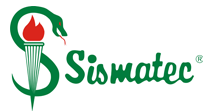Información de país
Brazil’s population is approximately 200mn and is growing by 0.9% annually. The country has a relatively young population and only 7.5% are aged 65 and above, though this segment is growing three times faster than the overall population. Approximately 85% of the population lives in cities and per capita spending is low at US$28.2 in 2013. The key cities in Brazil are São Paulo, Rio de Janeiro, Belo Horizonte, Brasília, Porto Alegre, Salvador, Recife and Curitiba.
Brazil’s healthcare expenditure has grown at a CAGR of 8.7% since 2008 and is estimated to be 9.3% of its GDP in 2013. The country’s SUS public healthcare system provides healthcare services to around 75% of the population, while the private sector caters to 25%. However, most inpatient services within the SUS are operated by private providers, with two-thirds of the 6,799 hospitals and 63% of the 452,060 beds registered in 2013 being privately run. The country also has the largest private health insurance sector in Latin America, with 50 mn of the population having private health plans.
Información de mercado
Apart from being the largest economy in South America, Brazil is also the largest medical device market and ranks among the top 10 medical device markets in the world. The growth of Brazil’s medical device market has been driven by its rapid economic growth over the last 20 years. The widening coverage of Brazil’s SUS public healthcare system and recent expansion of the private health insurance sector has resulted in higher demand for improved medical care, driving an increase in spending on medical devices. The country’s private sector accounts for 68% of the total medical devices purchased, while the public sector accounts for around 22%. Consumables represent the largest segment of the Brazilian medical devices market, followed by diagnostic imaging apparatus orthopedic and prosthetic devices, patient aids and dental products.
Brazil is a producer as well as importer of medical devices, though its imports are much lower than exports in terms of quantity as well as quality. The region meets over 50% of its demand for medical device through imports, which grew at a CAGR of 11.4% over 2008-2013 and were valued at US$3.0bn in 2013. A majority of the medical device imported by the country are high-tech medical equipment that cannot be produced locally. Brazil’s most important supplier of medical devices is the US, followed by Germany, China, Japan and Switzerland. In comparison, Brazil’s medical device exports grew at a CAGR of 2.1% over 2008-2013 and amounted to US$529.1mn in 2013.
Competitive scenario
Brazil has a well-established medical device industry, comprising of local and multinational companies catering mainly to the domestic market, with particular strength in consumables and dental products. However, it is more dependent on imports, due to the inability of local manufactures to meet the growing demand and high quality standard of global players. The country imports mostly high-tech and specialized medical devices, mainly from the US or Europe, which contribute 60 percent of its total imports.
Almost all the large medical device companies have manufactured or opened subsidiaries in Brazil, including GE Medical, Phillips Medical, Toshiba Medical, Siemens Medical, Kodak, Shimadzu, Beckton Dickinson, Baxter, Edwards Life Sciences, Johnson and Johnson, 3M Medical, Hollister, Smith & Nephew and Fresenius.
Current market trend
Brazil’s economic growth, the increasing reach of its SUS public healthcare system and fast growing private health care sector continues to drive an improvement in the region’s healthcare standards. Also, the region’s population aged 65 and above is growing at a rapid pace. Moreover, regular health checkups and frequent monitoring of health information undertaken by patients due to greater health awareness is driving the use and need for medical devices.
The increasing Brazilian middle class population has led to a rise in the rates of private insurance coverage, thereby driving the demand for medical devices from private hospitals, which prefer imported devices. On the other hand, Brazil’s public sector continues to modernize and upgrade obsolete equipment, leading to a demand for advanced medical devices. Brazilians covered by the SUS, comprising approximately 50 percent of the Brazilian healthcare market, are provided care through the country’s public hospital system, which are offered incentives to buy locally made products.
However, local medical device manufacturers are unable to meet the demand for more sophisticated medical equipment as their product quality does not match that of global players, thus making Brazil dependent on imports. As a result, the demand is being increasingly met by imported medical devices, particularly because complicated digital components now play a greater role in the kind of high-value medical devices demanded by Brazilian public as well as private hospitals, including tomography devices, MRIs and x-ray equipment.
Demand scenario
Brazil has always been considered as a top new market by medical device manufacturers. Despite being the largest economy in Latin America, Brazil’s per capita medical expenditure is still very low. The relatively low density of the region’s medical device market continues to offer a huge scope for growth.
Brazil’s medical device market still remains price sensitive, though continued modernization in the public sector and upgrading of obsolete equipment will create significant market opportunities if prices are competitive. Moreover, the recent strengthening of Brazil’s currency has led to an increase in the purchasing power of private and public hospitals. This, coupled with continued expansion of the region’s private health care sector, is expected to continue driving Brazil’s medical device market.
Brazil has a limited number of high-quality manufacturers of advanced medical products, ensuring that the region’s dependence on imports will continue. With domestic producers struggling to fulfill the demand of the region’s fast growing aging population and meet the quality standards of imported products, Brazil’s overall medical device market is forecasted to grow at a CAGR of 13.3% over 2013-2018 to US$10.6 Billion in 2018 and further to $13.1 Billion in 2020, driven primarily by a growing elderly population and healthcare coverage for 60-80% of the region’s population.
Market entry
Imported medical devices in Brazil are sold mainly through local agents, distributors and importers who sell to hospitals and clinics. Companies generally have to rely on local expertise for commercialization and even large companies, such as J&J and Medtronic, work with different distributors across Brazil despite their own sizeable presence. Multinationals use their regional offices for preparing their sales and marketing strategy, while making a direct effort in large cities where key accounts are located, and depend on distributors to provide “feet on the ground” and “door openers” in other regions. These distributors have a specific therapeutic focus and regional footprint, allowing multinationals to “outsource” a major part of their commercial efforts. Companies that lack a presence on the ground also depend on distributors for providing commercial infrastructure, as well as developing a sales and pricing strategy vis-à-vis local products. Determining pricing for medical devices is particularly challenging in Brazil due to its high import and sales tariffs.
However, regional economic disparities, varying states of infrastructure, and a host of other issues, often make it difficult to find a single distributor with complete national coverage. As a result of Brazil’s enormous territory size, the region’s distributors have developed their own model for importing, transporting and selling, which is quite different from that in other countries. These distributors continue to improve their model in line with the region’s changing laws and rules, making it even more difficult to understand for principals abroad.
Barriers
Brazil has a number of regulations governing the import and sale of medical devices. Electronically controlled medical devices require additional Inmetro certification. All applicants have to first register with Brazil’s health regulatory agency, ANVISA, apart from obtaining licenses to sell their products. All products need to be registered with ANVISA before their launch in the Brazilian market. Receiving final approval from the government after filing an application for registration can take anything from six months to two years.
Manufacturers also need to prove compliance with good manufacturing practices (GMP) and Brazilian auditors conduct GMP inspections of manufacturing sites in Brazil or abroad before filing for product registration with ANVISA. Taxation, import duties and tariffs are very high in Brazil, with each product coming under a different structure, making it almost impossible to calculate the landed cost or end-user price in advance.
Since multinationals find it very difficult to navigate the complex regulatory environment, they often acquire locally owned firms which already have ANVISA certification and Basic Production Processes (PPBs) approval, instead of building new facilities outright.










